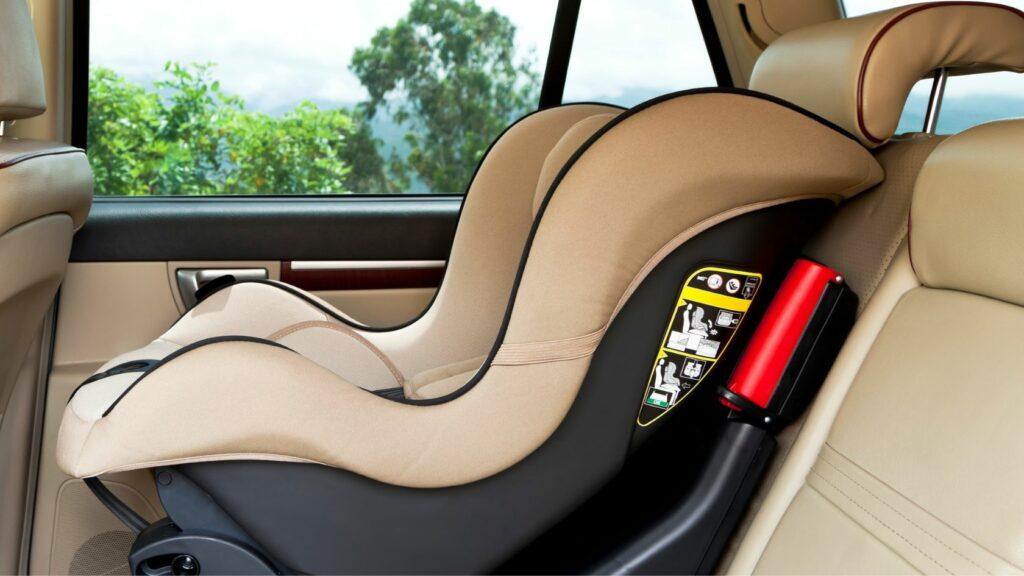
In the complicated world of child safety regulations, one question frequently echoes in parents’ minds: Is it illegal to use an expired car seat?
The answer isn’t as straightforward as it might seem. The complexity of intertwining laws in different countries, expiration dates, and the paramount concern for a child’s safety is in the middle of car seat consideration.
If you are inadvertently risking legal consequences by using seemingly harmless outdated seats then read this post. In this intriguing exploration, we will uncover the truth behind expired car seats.
Is it illegal to use an expired car seat?
No, it is not illegal to use an expired car seat because there is no specific law prohibiting the use of an expired car seat.
However, many states have laws requiring parents to use car seats according to the manufacturer’s instructions. If the manufacturer has set an expiration date for the car seat, using it beyond that date could be considered a violation of those laws.
Even though it may not be explicitly illegal to use an expired car seat, it is strongly discouraged. This is because the materials in the car seat may have degraded, making it less effective in a crash. If the car seat has crossed expiry limits, it may not meet the required safety standards and may even not fit your child properly.
The National Highway Traffic Safety Administration (NHTSA) recommends that car seats be replaced after six years, even if they do not have an expiration date.
If you are unsure whether your car seat is expired, you can check the manufacturer’s website or contact them directly.
Why do car seats expire?
Baby car seats often come with expiry date labels. The labeling is part of the guidelines offered by most manufacturers to aware their customer’s about the usefulness of the car seat.
The expiry labeling is rooted in ensuring the highest level of safety for small children. Here are the reasons for the expiration date for these safety devices:
Material Wear and Tear – Car seats for babies and children don’t have standard material across the structure.
Car seats extensively use plastics for their structural components, such as the shell, buckles, and adjusters. While plastics are generally durable, they can become brittle and crack over time due to exposure to extreme temperatures, sunlight, and chemicals.
Similarly, some sections of car seats are made of metal including buckles, adjusters, and latch connectors. Metals have a tendency to corrode and weaken with time due to moisture, humidity, and other corrosive substances.
Foam and padding also lose their shock-absorbing properties and fabrics can compress, fade, tear, and become less resistant to abrasion and repeated washing.
This wear and tear can significantly compromise the structural integrity of the seat, making it less effective in a crash.
Changing Safety Standards – Safety regulations and standards for car seats are constantly evolving as new research and technologies emerge.
Older car seats may not meet the latest safety requirements, rendering them less effective in protecting children during accidents.
As an example, in recent years, crash testing protocols for car seats have become more rigorous and comprehensive, incorporating a wider range of crash scenarios and impact forces.
Car seats manufactured before these testing scenarios may be considered expired due to their ineffectiveness in dealing with more severe crashes.
Technological Advancements – Modern car seats often incorporate advanced features and technologies designed to enhance safety.
Side-impact protection and energy-absorbing materials such as deeper side wings, and head-protection wings are the advancements that help protect children from side-impact collisions.

Expired car seats lack these innovations, making them less capable of safeguarding children in the event of a collision.
Exposure to Environmental Factors & Chemicals – Car seats are exposed to various environmental elements, including sunlight, temperature fluctuations, and humidity.
From hot summer days to cold winter nights, these temperature extremes can cause plastics to become brittle and crack.
If you reside in a warmer climate, prolonged exposure to sunlight’s UV radiation degrades the car seat’s plastic through photo-degradation. As a result of this, plastic components become weaker and discolored.
Another reason for the expiry of car seats is chemicals. Harsh substances from cleaning products used to clean car seats can interact with plastics causing them to degrade. Even air fresheners and spilled foods can impact the originality of plastics accelerating the breakdown.
All these factors diminish the seat’s ability to withstand impact forces.
Miscellaneous Factors – Regular use, installation, and removal of the car seat may put stress on plastic components, leading to fatigue and potential cracking.
From a long-term perspective, plastics naturally age and degrade due to changes in molecular structure leading to loss of strength, flexibility, and resilience.
In many instances, manufacturers may issue recalls to address safety defects or issues that may have been identified later. An expired car seat might not be eligible for such replacements.
Lastly, regulations and laws related to child safety seats change over time in different countries. If the car seat in use is not compliant with the changed legal requirement, it will be considered expired and could lead to legal consequences if used improperly.
Considering all these factors, manufacturers provide an expiration date to indicate the period during which the car seat is guaranteed to meet safety standards effectively.
Once a car seat reaches its expiration date, it is strongly recommended to replace it with a new, up-to-date model to ensure the continued safety of the child using it.
Where is the expiration date on the car seat?
The expiration date on a car seat is typically printed on a sticker or label affixed to the car seat itself.
The exact location of the expiration date sticker may vary depending on the car seat model and manufacturer, but it is commonly found on the underside of the car seat base, the back of the car seat shell, or the side of the car seat.
If you are unable to locate the expiration date, you can contact the car seat manufacturer directly for assistance.
What to do with an expired car seat?
It is recommended to dispose of an expired car seat to ensure it doesn’t end up being used by someone else, as it no longer meets safety standards.
Dismantle the car seat yourself and dispose of the components separately. Remove the fabric cover, straps, and padding, and cut them into pieces to prevent reuse.
Recycle the plastic and metal parts if possible, and dispose of the remaining non-recyclable materials in the trash.
If you are concerned about someone taking the car seat from the trash, you can make it unusable by cutting the straps, removing the buckles, and writing “EXPIRED” or “DO NOT USE” on the car seat shell.
Here are the recommended ways to recycle an expired car seat:
Recycle through car seat recycling programs: Several retailers and organizations host car seat recycling events or have ongoing programs to collect and recycle expired car seats.
These programs ensure that the car seat components are properly disassembled and recycled, minimizing environmental impact.
Check with local recycling centers: Some local recycling centers may accept car seats for recycling.
Contact your local recycling center or waste management authority to inquire about their policies and procedures for car seat recycling.
Note: It is crucial to never donate or sell an expired car seat, as it could put a child at risk. Always dispose of expired car seats responsibly to prevent their reuse.
Remember, safety is paramount when it comes to child car seats. Properly disposing of expired car seats ensures that they don’t end up being used by someone else, potentially compromising a child’s safety.
Is it okay to buy an expired car seat?
No, it is not recommended to buy an expired car seat, even if it appears to be in good condition. This is because expired car seats may not meet current safety standards, as materials can degrade over time, and safety features may become outdated.
Secondly, you may not know the history of a secondhand car seat that you are buying. If the seat has been involved in a crash or has any hidden damage an unknown history could compromise your child’s safety.
More importantly, manufacturers typically discontinue support for expired car seats, meaning you may not have access to replacement parts, instruction manuals, or recall notifications.
Using an expired car seat could also potentially lead to legal issues in the event of an accident depending on local laws and regulations.
While purchasing an expired car seat may seem like a cost-saving option, the potential safety risks far outweigh any financial benefits.
Investing in a new car seat that is within its expiration date is the best way to ensure your child’s safety on the road.
Final thoughts
The legality of using an expired car seat varies based on specific laws and regulations in different regions.
Generally, there is no explicit, universal law that strictly prohibits the use of an expired car seat. However, the nuances lie in state or local regulations and manufacturer guidelines.
While it might not be explicitly illegal in every jurisdiction, using an expired car seat is not a good idea due to safety concerns and adherence to manufacturer and regulatory guidelines.
Car seats are designed to protect children in the event of a car crash, and their effectiveness can degrade over time due to factors such as wear and tear, exposure to sunlight, and changes in safety standards. Using an expired car seat could put your child at risk in a crash.
It’s essential for parents to prioritize the safety of their children by using car seats that meet the latest safety standards and replacing them when necessary.

